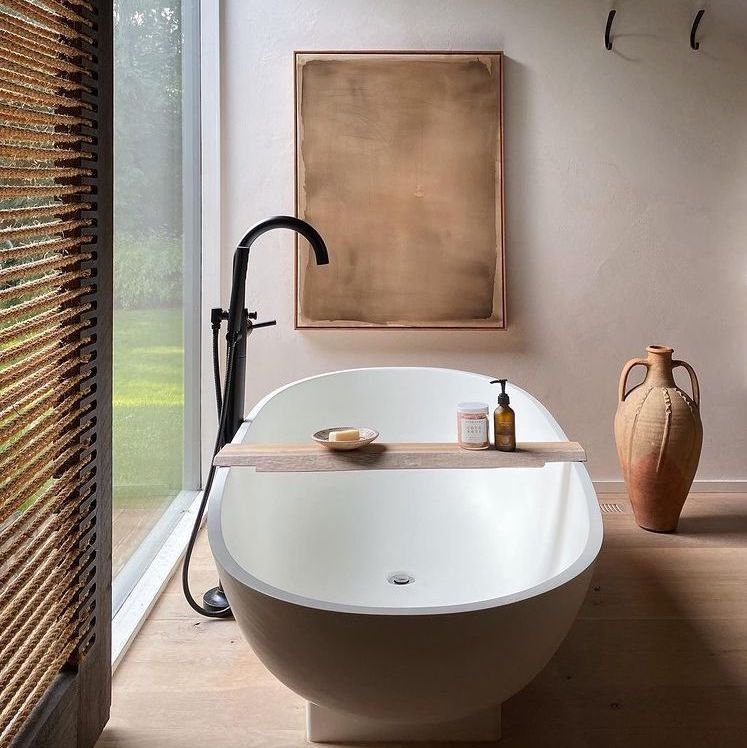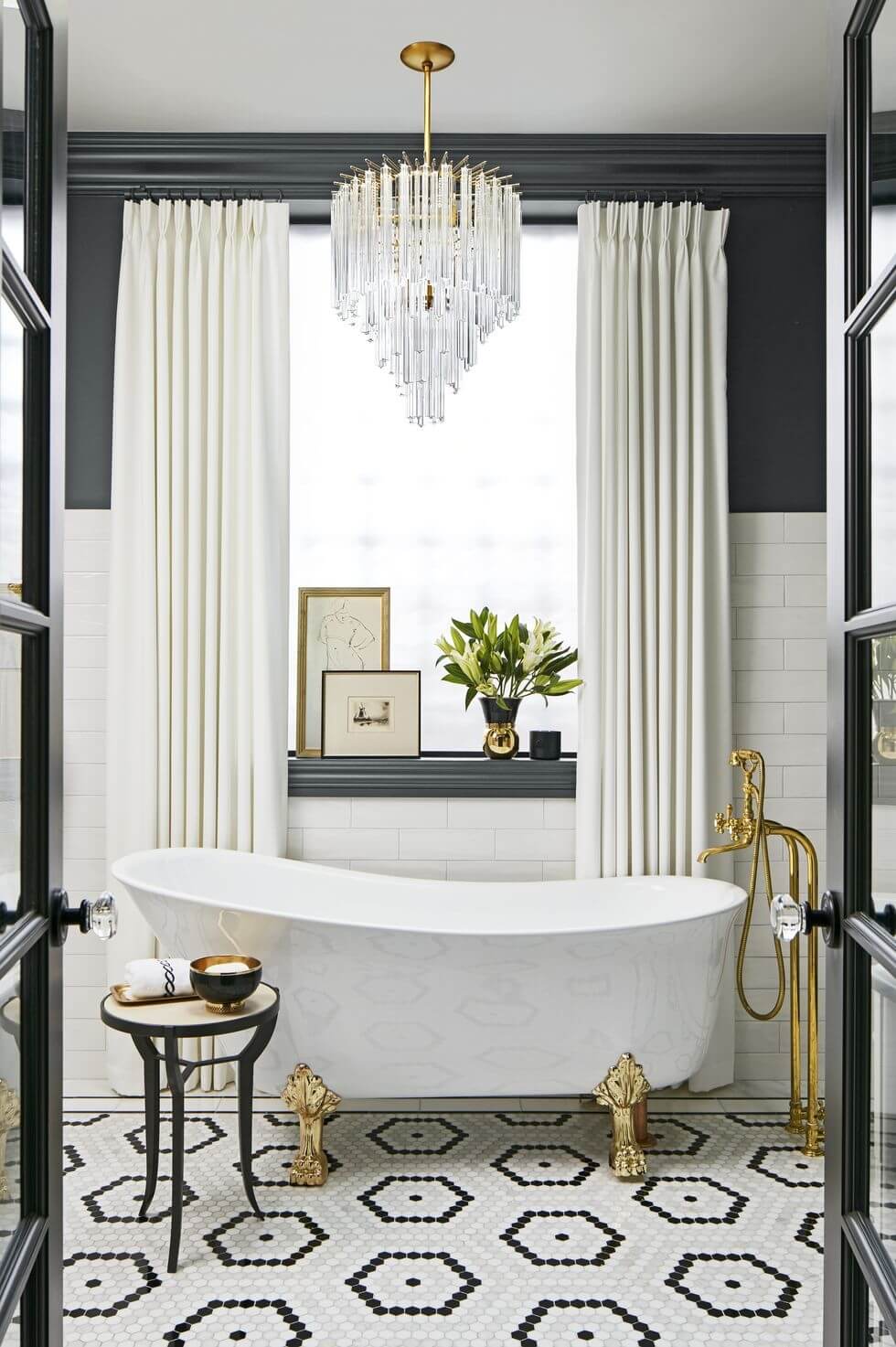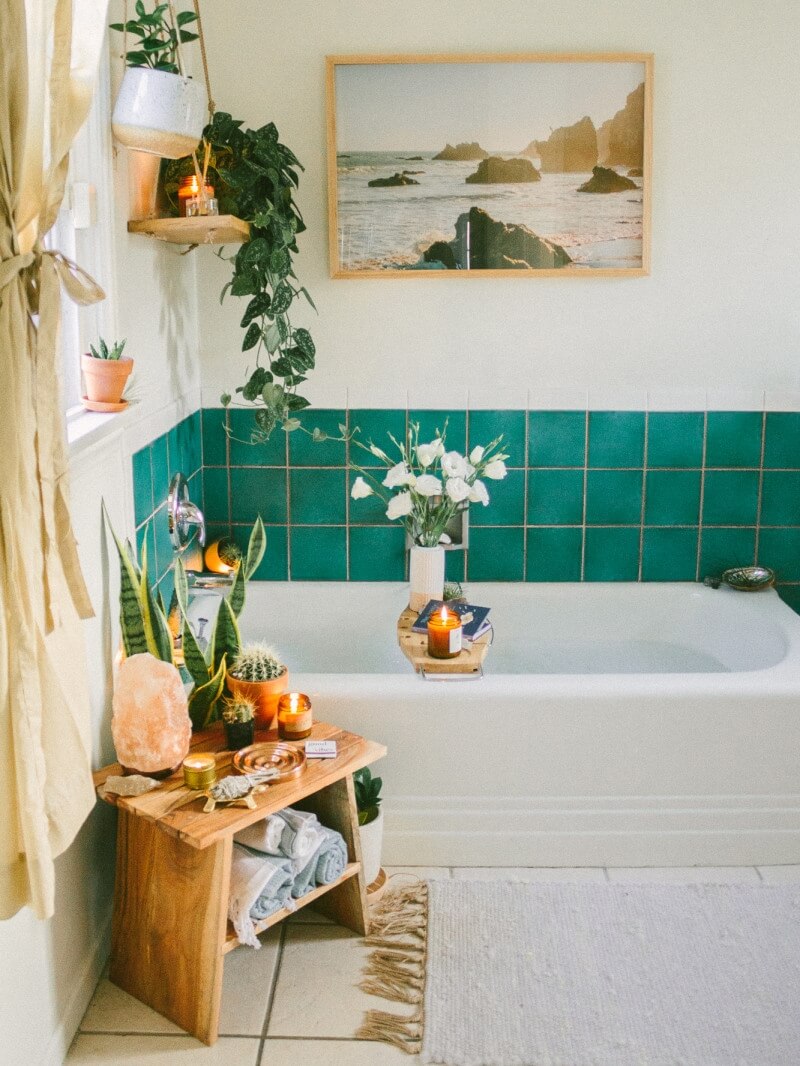
Should I Buy Art for My Bathroom? The Perils of Decorating a High-Moisture Environment?
The walls have been plastered, the floor tiles are down, the bathtub, shower, basin and toilet are all plumbed in and the wall tiling is done. It’s time to decorate your beautiful new luxury bathroom. Now, the plants are fine – you’ve chosen some tropical greenery that loves a bit of moisture – but artwork? Should you? Can you, even? Sure, it’s going to look fantastic when it’s hung, but isn’t any art you put in your bathroom just going to get ruined by the steam after the first week?
Controlling the build-up of moisture
The first rule to decorating a bathroom with artwork is to make sure it’s an environment within which you have as many options as possible. And that means one thing – controlling moisture build-up.
If your bathroom has a window, you need to make sure it’s always open while you’re in there and for a few minutes once you get out of there to let the steam escape, too. You’ll have hopefully invested in an extractor fan – especially if your bathroom doesn’t have windows. Make sure you use it!
Also, when you’re not in the bathroom, leave the door open to allow moisture to escape through other openings in the house.
Sculpture in the bathroom
You should be looking to decorate your bathroom with artwork that is as close to being impervious to water as possible. The obvious choice, here, is sculpture – plaster of Paris, soapstone, glass, bronze… The material options are broad and exciting, whether you want to invest in original works of art or reproductions of some of your favourite sculptures. Even wooden sculptures should withstand the relatively low amount of steam you’ll generate, but obviously refer to our last point on that.

Photo by Nathan Kirkman
Oil paintings in the bathroom
You might think that because oil paints aren’t water-based, they’d function quite perfectly in a bathroom. Well, just be careful, especially if you’re hanging original canvases without frames and even more so if they’re worth a pretty penny. Any temperatures over 24C will cause the support – whether it’s wood or canvas – to expand and that will make the paint crack, eventually. And, if the humidity in the bathroom goes above 55 per cent, you might find the paint begins to develop mould, attract insects and begin to develop a white haze (known as blooming).
We would recommend framing your oil paintings in frames that are deep enough to contain the whole depth of the painting and held in with mirror clips and small pieces of cork so that the painting can expand or contract naturally without getting damaged. Also, make sure to put an acid-free backboard on the back of your frames to help protect the painting from heat and moisture.
Watercolours and other water-based paints in the bathroom
It’s surprising just how many watercolours and water-based paints (like acrylic or gouache) you do see hung in bathrooms, considering the fact that high levels of moisture can damage both the paper they’re painted on and the paint itself. An exposed watercolour painting will turn into a formless blob within the space of a few hot showers in an unventilated bathroom, so be very mindful before you hang them.
If you absolutely must hang water-based paints in your bathroom, make sure they’re protected behind a glaze in the frame and make sure as best as you can that any moisture that collects has chance to escape. Do not seal your paintings inside the frames as any small droplets that do get through could stain and discolour your artwork. Acrylic is a much better glaze for bathroom art than glass as it will allow air to flow through and prevent long-term damage.

Sara Toufali's bathroom
Digital prints, silk-screened posters and other inexpensive artworks in the bathroom
As far as wall art in the bathroom goes, there’s no better choice than a piece you’re not too precious about, as if it gets damaged, you can just recycle and replace it.
Unframed digital prints on canvas may not be the most high-end way to finish off your otherwise luxury space, but they will certainly be one of the most durable. Ink is far less easily damaged by expansion and contraction of the canvas than paint and you won’t need to worry about moisture getting trapped behind a glaze, because there won’t be one.
If you want to bring a bit of that high-end gallery feeling to the bathroom, though, consider silk-screened poster art in a sturdy frame with an acrylic glaze. Screen print ink is generally oil-based (but not always, so be mindful of what you buy) which means the print won’t be damaged by moisture and, unless exposed to extreme levels of steam, neither should the thick paper upon which it’s printed, when protected by a good frame. Screen prints are often limited editions and numbered, so you can get yourself a real high-end piece that should last a lifetime in a well-ventilated bathroom.
Main picture: Athena Calderone's bathroom